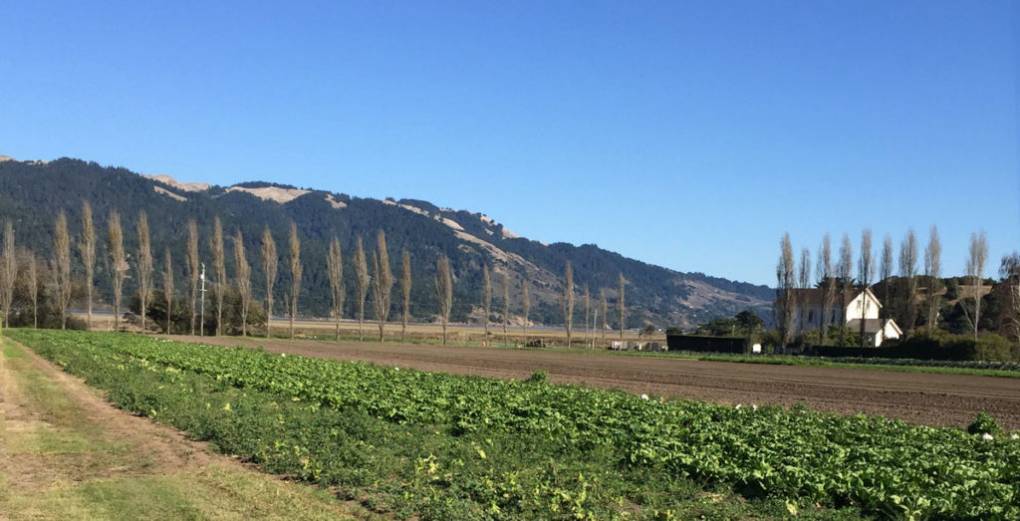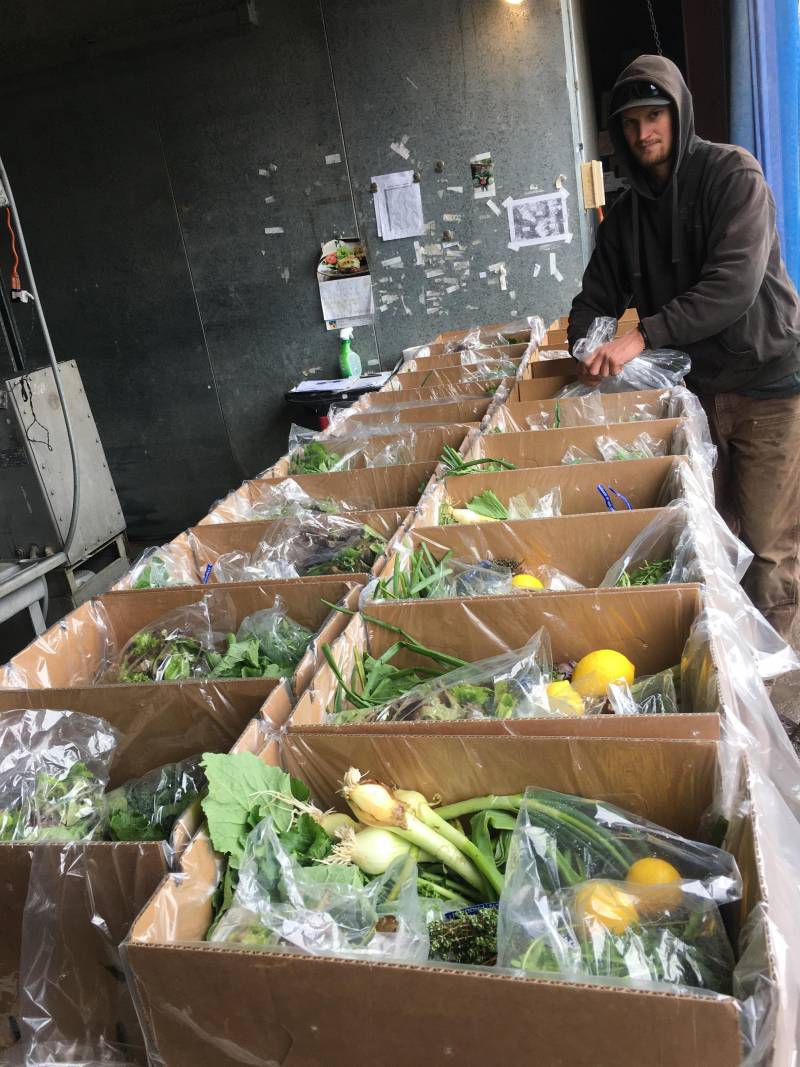Without Restaurant Sales, Local Farms Face Tough Decisions

Star Route Farms grows a variety of vegetables in West Marin and the Coachella Valley (Courtesy of Star Route Farms)
When the statewide shelter-in-place order shuttered many restaurants in the Bay Area, Annabelle Lenderink panicked. She manages Star Route Farms, which grows a variety of vegetables in West Marin and the Coachella Valley. Nearly all of the restaurant sales the 40-acre farm depends on evaporated overnight.
“It was just really gone, you know, nothing,” Lenderink said.
Normally, local restaurants buy 80% of the lettuce, vegetables and herbs that Star Route grows. The rest goes to farmers’ markets.
Farms like Star Route, which depend heavily on sales to restaurants, have been forced to find new sales outlets overnight. Some are leaving crops on the vine to rot rather than spend time and money harvesting.
“A lot of them lost up to 100% of their sales outlets almost overnight,” said Evan Wiig, director of membership and communications at the Community Alliance with Family Farmers.
The COVID-19 pandemic upended farmers’ expected sales at outlets up and down the state. The fact that farmers deal with perishable products compounds the problem, Wiig said.
“You can’t just put a cork in it and hope for a better time,” Wiig said.
Mike Iacopi, owner of Iacopi Farms outside Pescadero, grew up farming and never looked back. He grows peas and beans, both dry and fresh, on 200 acres. He dry farms half of that, meaning there is no irrigation. Sales to San Francisco restaurants like Delfina and Lazy Bear accounted for about 50% of his business before the COVID-19 crisis forced those businesses to dramatically reduce their operations.

A Star Route Farms employees packs produce into boxes. (Courtesy of Annabelle Lenderink/Star Route Farms)
This time of year, Iacopi expects to sell 300 boxes of English peas, favas and sugar snaps to restaurants each week. This year, he’s selling about 40 boxes a week. Farmers markets have held steady, but he depends on restaurants to move his product in big volumes. “When you have a bumper crop and no place to distribute them, it’s kind of a slap in the face,” Iacopi said. For now, he is only harvesting what he thinks he can sell.
“The rest is just rotting on the plants,” Iacopi said.
Further south, Will Brokaw grows avocados, kiwis, guavas and a variety of citrus on two ranches, one Santa Paula and one in Soledad. His restaurant business dropped by 90%, and while farmers market sales have picked up, he estimates the farm has lost about 50% of its revenue since mid-March. Now, he is deciding whether to harvest lemons and mandarins or leave them on the tree to rot.
To deal with the reduction in restaurant sales, Star Route Farms made a swift transition to assembling produce boxes and distributing them to between 16 and 18 sites per week. A16, a restaurant with locations in San Francisco and Oakland, is among the usual restaurant clients now selling Star Route Farms produce boxes to customers.
Support from the University of San Francisco, which owns the farm, eased the transition. The university distributes produce boxes on its campus and built a website so Star Route could process online orders.
Some of the restaurants that normally buy produce for their kitchens started selling the boxes, too, and Lenderink told her customers at farmers markets about them.
“This is old hat for farms who have been doing this for a long time,” Lenderink said. She restructured the focus of the farm around packing and distributing produce boxes rather than preparing and planting the fields for the summer season. While it has been a lot of work to pivot to an entirely new business model in a matter of weeks, Lenderink doesn’t see another option.
“What’s the alternative?” Lenderink said, “No business at all?”
Farmers without institutional support, however, have had a harder time. Mike Iacopi didn’t have the capacity to start packing hundreds of produce boxes a week, or an effective means to develop a customer base overnight. Iacopi doesn’t think the trade off is worth it, something Evan Wiig of the Community Alliance With Family Farmers says many farmers are feeling, too.
“You’re still going to end up doing 10 times as much work for half the revenue,” Wiig said. “So that’s a huge burden.”
The COVID-19 pandemic hit just as farms had to make decisions about how much to plant. Spring is the time of year farmers plant for the summer and fall season, but it’s uncertain what the market will look like in a few months. No one knows just how long the pandemic will keep restaurants closed or operating at a much lower capacity, and that has huge implications for farmers.
“Do we plant 16 rows or eight rows?” Iacopi said. “It all costs money to plant and take care of every day.”
Lenderink faces tough decisions about what to plant, too. “We’re basically a lettuce salad farm,” Lenderink said. “We need to diversify because people want vegetables in the boxes.” That means switching to new varieties of cucumbers, squashes and herbs suited for consumer preferences.
Lenderink worries about how the farm will manage the extra work involved in direct-to-consumer boxes in the long term.
“It’s a lot of uncertainty,” Lenderink said. “You just wake up every day and go OK, now what, what’s desperate today?”

